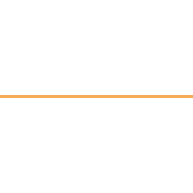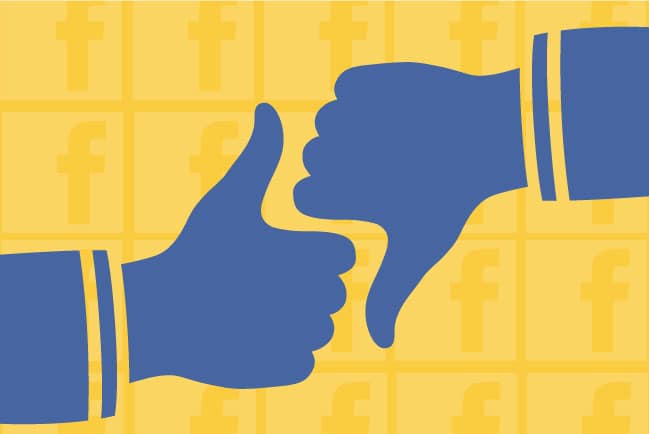“Is Facebook dead?”
This is a question I get asked all the time. The easy answer is “no way. A site isn’t dead if it has 1.3 billion active users.” But, of course, there’s more to the answer than that.
I have personally felt a lot of disappointment with Facebook over the past year. It seems like the people in my Facebook network post fewer personal updates and more click bait than ever before. But when marketers talk about the decline of Facebook, we are often referring to the decline in organic reach that has accompanied the site’s offering of paid advertising.
So what does this mean for your marketing? Before you give up on Facebook marketing for your business, take a look at the pros and cons I’ve outlined and the conclusions I have come to in planning social media strategies for clients.
CONS
Decline in Organic Reach
Because of the rise in paid advertising and newsfeed algorithm changes, the organic reach of a typical Facebook post will soon fall below 0.073% according to a recent study by Forrester. In contrast, top brands on Instagram reportedly have a per-follower engagement rate of 4.21%.
Lack of Genuine Interaction
On Facebook, brands are treated in a fundamentally different than way than users are. Think about it: as a user, you can follow friends, tag them in posts, and post directly to their timelines. Not so for brand pages; they are limited to tagging other brands and cannot post or share content directly with individual followers. Plus, you can’t send direct messages to fans. All you can do is wait for them to post a comment or complaint on your page. That doesn’t really sound like a conversation to me.
Migration to Other Social Sites
A tremendous amount of conflicting data has come out over the past year about the supposed decline in the number of teenagers on Facebook. Reported numbers of teens on Facebook range from 45% to 87%. The one thing that is for sure is that most users (not just teens) are dividing their time between two or more social media sites.
PROS
Cost Effective Advertising
Organic reach may be declining, but paid reach can be a cost effective way to increase brand engagement, referral traffic, and leads. With paid advertising on Facebook, you get detailed information about cost per lead, cost per click, etc. that you can quickly compare with other digital marketing efforts like PPC.
A Timely Place for Updates
Facebook is a great place to post timely updates about events and promotions.Sure, Facebook doesn’t have the “real time” quality of Twitter (People “live tweet” events—they don’t really “live Facebook”). On the other hand, Facebook posts are somewhat less ephemeral than tweets, assuming a large, easily discovered position on your Page’s timeline.
Half of all people on the planet with internet access use Facebook.
Growth in the number of Facebook users has slowed, but at this point there is only so much it can grow. That’s what happens when you have 1.3 billion active users on a site—or half of all internet users on the planet. According to a Pew Research study, 71% of online adults use Facebook, most of whom check the site daily.
A Great Place to Learn About Your Audience
Facebook’s search function is an awesome tool for doing quick research on your audience. You can type in phrases like “books liked by people who went to the University of Texas at Austin” or “Pages liked by people who like [your page].” I have used this function several times to refine my audience for an ad set or to learn about the content preferences of my audience.
My Takeaway
Don’t rely on Facebook for all your social media marketing.
Anytime you market on someone else’s turf, you need to have a backup plan. Facebook’s algorithm changes could suddenly make your perfect strategy worthless. The site’s massive user base is an incredibly valuable resource, but by staying in the loop about other platforms, you may find your particular audience is spending more time elsewhere.
Diversify your social activity and tailor it to your audience.
Most people use more than one social media site. So whether or not you use Facebook in your marketing, it’s probably in your best interest for your brand to be on more than one social media platform as well. Don’t forget that the content people want on Facebook is going to be different than what they’re looking for on Linkedin or Pinterest. Post accordingly.
Test Facebook advertising before you invest.
Before you plan your marketing around Facebook ads, make sure to test them. For some clients, the Facebook ads I have run worked exactly as I wanted them to. For others, I discovered after a few weeks of testing that I could be getting leads elsewhere at a slightly lower cost. Don’t forget to A/B test your ads as well. Facebook allows you to run variations of your ad, which has also proven very handy.
Ultimately, Facebook still offers tremendous value for users and marketers alike. And for better or worse, changes are on the horizon: as users are adapting single-service social media apps, Facebook has begun adapting to changes in user preferences by “un-bundling” their services. Keeping up with changes like these are crucial to your brand’s success on social media. In the mean time, take advantage of Facebook’s wide reach, track-able advertising, and thorough audience data.

